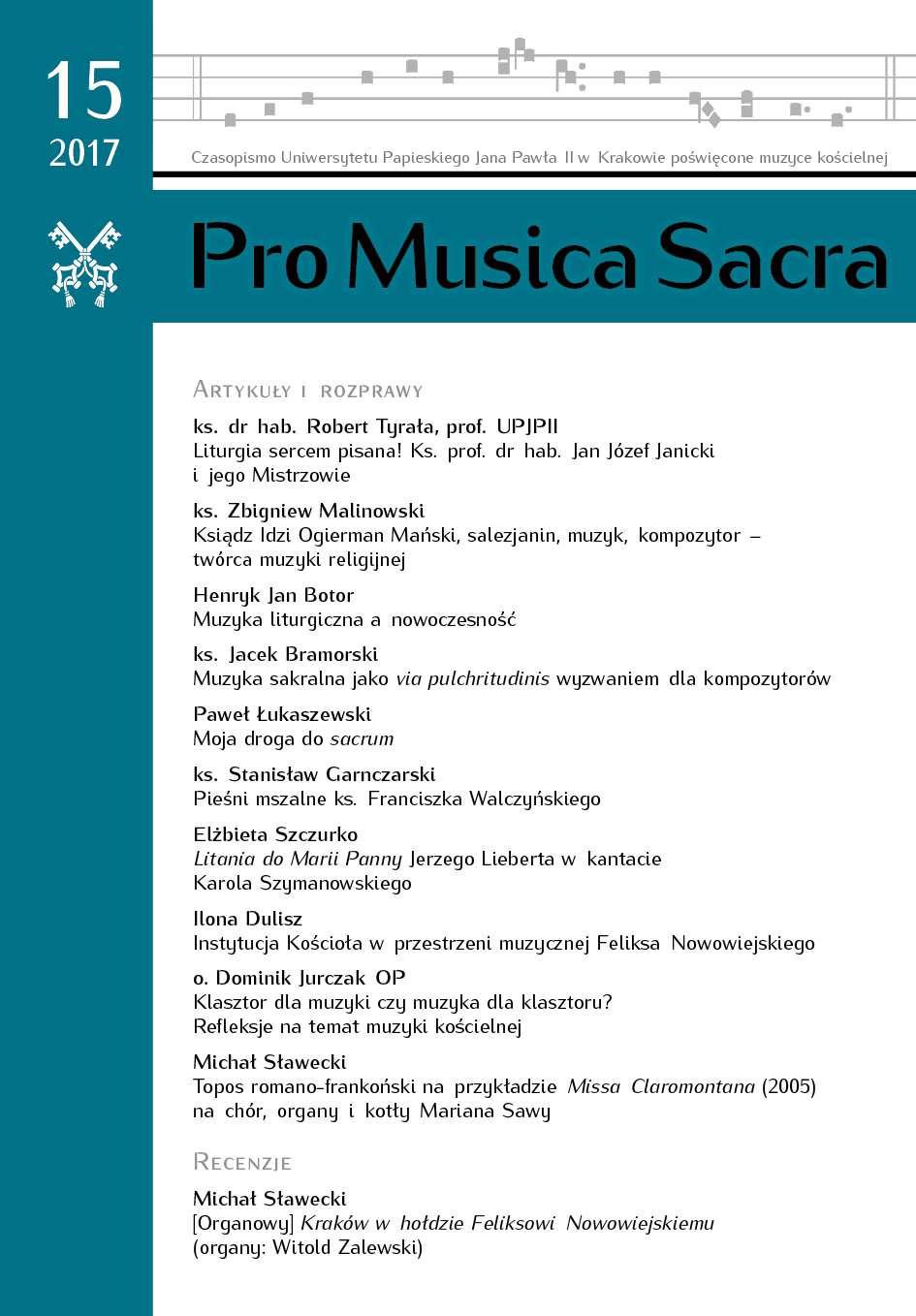A monastery for music, or music for a monastery? Reflection on liturgical music
DOI:
https://doi.org/10.15633/pms.2258Keywords:
liturgical music, Church music, II Council of Nicea, Sacrosanctum Concilium, Vatican II, monastery, priory, convent, prayer, contemplationAbstract
The purpose of this paper is to analyze the most essential characteristics of sacred music, especially from an historical perspective. By using different textual witnesses from the biblical, patristic, medieval, modern, and contemporary periods, the function of sacred music in the prayer of the Church will emerge, as will some of the causes for unnecessary misunderstanding and over‑interpretation in our own time of changing paradigms. In short the goal of this investigation will be to provide insight into the nature of sacred music and its function in the liturgy and life of the Church.
References
Augustyn z Hippony, Reguła, w: Księga konstytucji i zarządzeń Braci Zakonu Kaznodziejów, tłum. J. Janczak, Poznań 2003.
Dokumenty soborów powszechnych. Tekst grecki, łaciński, polski, t. 1: Nicea I, Konstantynopol I, Efez, Chalcedon, Konstantynopol II, Konstantynopol III, Nicea II (325–787), oprac. A. Baron, H. Pietras, Kraków 2007.
Ratzinger J., Teologia della liturgia. La fondazione sacramentale dell’esistenza cristiana, Città del Vaticano 2010.
Downloads
Published
Issue
Section
License
Authors who publish with this journal agree to the following terms:
- Authors retain the copyright and full publishing rights without restrictions, and grant the journal right of first publication with the work simultaneously licensed under a Creative Commons Attribution 4.0 International License that allows others to share the work with an acknowledgement of the work's authorship and initial publication in this journal.
- Authors are able to enter into separate, additional contractual arrangements for the non-exclusive distribution of the journal's published version of the work (e.g., post it to an institutional repository or publish it in a book), with an acknowledgement of its initial publication in this journal.
- Authors are permitted and encouraged to post their work online (e.g., in institutional repositories or on their website) prior to and during the submission process, as it can lead to productive exchanges, as well as earlier and greater citation of published work (See The Effect of Open Access).

